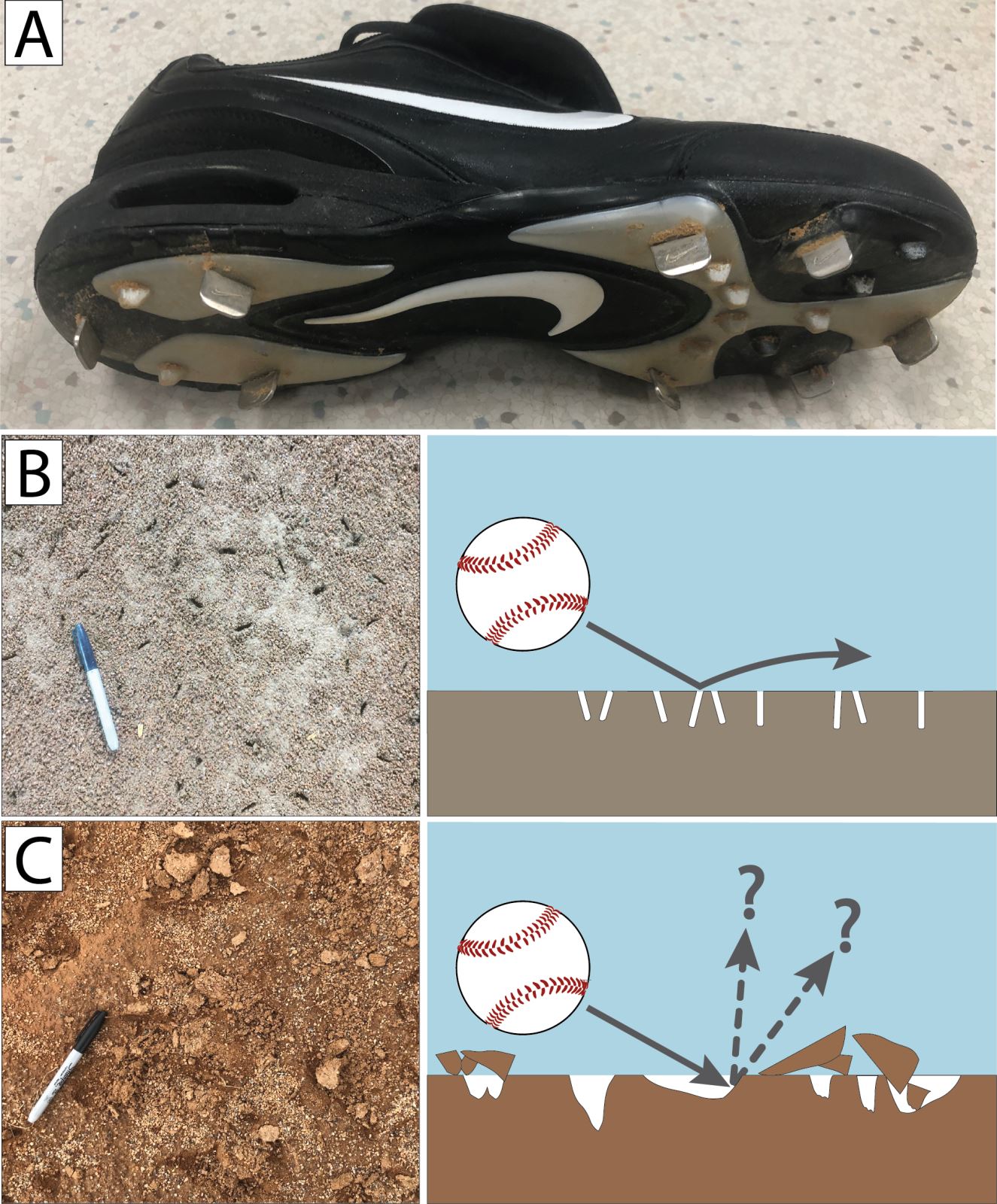In a word, yes. The type of soil on the baseball field greatly affects how players perform.
Professional baseball fields are built from many types of soil. You might never guess that beneath the athletes’ feet is a precisely-engineered mixture made of multiple components. We call these materials “engineered soils.” Engineered soils are designed and manufactured for a specific purpose: in this case, to keep the playing surface safe and allow the game to continue during rainy weather. Engineered soils perform better than a naturally-occurring soil would on its own.

Although most of the audience marvels at the patterns of the outfield, most of a baseball game is played on the soil covered “infield skin.” Scientists are studying the best blends of sand and clay to help players be safe, and to keep the game moving. Credit: Evan Mascitti
There are two main areas of a baseball field: the turfgrass and the infield skin. The turfgrass draws most attention from the fans because of the beautiful geometric patterns mown by the grounds crew. However, most of the important part of baseball plays occur on the infield “skin.” This has no grass on it (hence the “hairless” connotation). The grounds crew carefully maintains the infield skin, so it is smooth and has proper moisture.
The soil for infield skin is constructed using a blend of sand and clay. This mixture allows the players’ cleats to grab the surface without removing any soil. The idea is similar to a thumbtack being pushed into and then removed from a corkboard. The small cleat indentations in the middle panel of Figure 2 mean that a ground ball will bounce true. Larger cleat marks (bottom panel) can create bad hops, leading to a fielding error or an injury.
You may even note that the grounds crew grooms this infield skin with steel-mesh drags after the 3rd and 6th innings. This keeps the playing surface safe and performing well throughout the game. The dragging process removes some of the marks that form during play.

Baseball players wear shoes with cleats, A. This helps them with traction. The soils of a baseball field’s “infield skin” are engineered to withstand regular pounding from players’ cleats, B. This means the cleat will make a clean cut into the soil and should not affect the bounce of the ball in the infield. However, sometimes the cleats can make larger indentations and soil clods, which will inhibit a smooth and predictable ball path, C. Credit: Evan Mascitti
Our team of soil scientists at Penn State studies how different clay minerals affect the soil’s response to water. We use an air-powered lab device to simulate the action of a player’s foot. This test allows us to predict how a soil will perform in the field without the need to construct large plots or use human subjects.
An engineered infield soil has traits of both clay and sand. By mixing them together, we obtain a new soil which performs better than the sum of its parts. The sand provides rigidity while the clay allows the soil to be shaped and molded – a property known by soil scientists as plasticity. We often associate the word plastic with wasteful single-use products, but the etymology of plastic originates from the ancient Greek word plastikos for potter’s clay. Clay particles provide plasticity because of their shape and their strong affinity for water. These properties allow the particles to slide past one another when a force is applied but retain their new positions when the load is removed. Plasticity is what allows an infield soil to provide the cleat-in/cleat-out effect.

Penn State’s cleat-mark simulator allows researchers to test various sand/clay mixtures to determine the best mixes for infield soils. The sample at bottom shows cleat-in/cleat-out performance. Credit: Evan Mascitti
A skilled grounds crew manages soil water content carefully. This means covering the infield with a tarp before rain events and adding water with a large hose on sunny days. Water management keeps the infield at an ideal consistency – firm enough to provide traction, but soft enough to be forgiving of ground balls.
Engineered soils are an important part of baseball field construction. These soils help the grounds crew keep the field safe and playable in all weather conditions. Next time you head to the stadium or catch a game on TV, imagine all the hard work and science used to build and care for the field. There is a lot of science beneath the players’ feet.